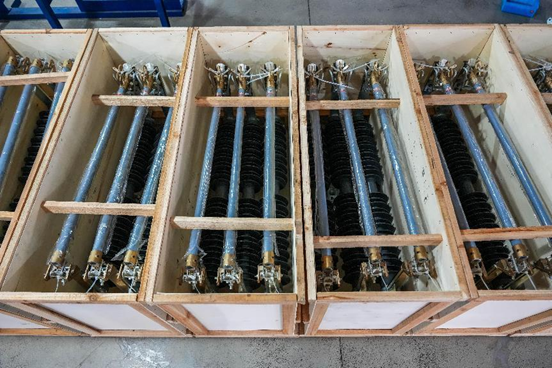
Coastal power grids face harsh conditions—salt spray, humidity, and UV exposure. Choosing between ceramic-housed arresters and polymer-housed arresters impacts long-term reliability. Here’s how to decide:
Ceramic arresters: Pros & Cons
- Pros: High mechanical strength, fire resistance, and proven performance in high-pollution areas (e.g., near industrial zones).
- Cons: Vulnerable to salt spray corrosion; heavier, complicating outdoor Drop-out Fuse retrofits on aging poles.
Polymer arresters: Coastal Grid Champions
- Salt Spray Resistance: Silicone rubber sheds moisture and resists corrosion, ideal for coastal drop-out fuse installations.
- Lightweight: Easier to pair with Indoor Drop Out Fuse systems in substations or compact switchgear.
- Cost-Effective: 30% lower maintenance costs vs. ceramic over 20+ years.
Case Study: Vietnam’s Coastal Grid Upgrade
A 2022 project replaced 500 ceramic arresters with polymer-housed units near Da Nang. Results:
- Outage Reduction: Lightning trips dropped by 65%.
- Durability: Zero corrosion issues after 18 months vs. 15% ceramic failures.
Synergy with Drop-Out Fuses
- Overload Protection: Pair polymer arresters with Outdoor Drop-out Fuses (16kA rating) for full-circuit defense.
- Maintenance: Use indoor drop out fuse units in substations for easy access during storms.

Upgrade smartly—opt for polymer arresters in coastal zones and ceramic where pollution (not salt) dominates.
out
Oil&Gas exploited
Automotive Manufacturing
Transportation & Dlistrlbutlon
Manufacture
Industrial Construction
Green Energy
Copyright ? 2024 All Rights Reserved
Back to top 
Comment
(0)